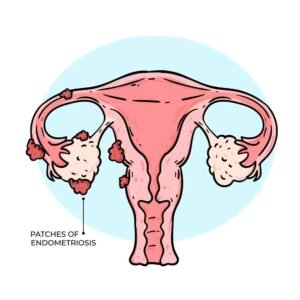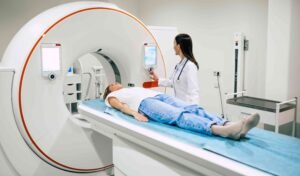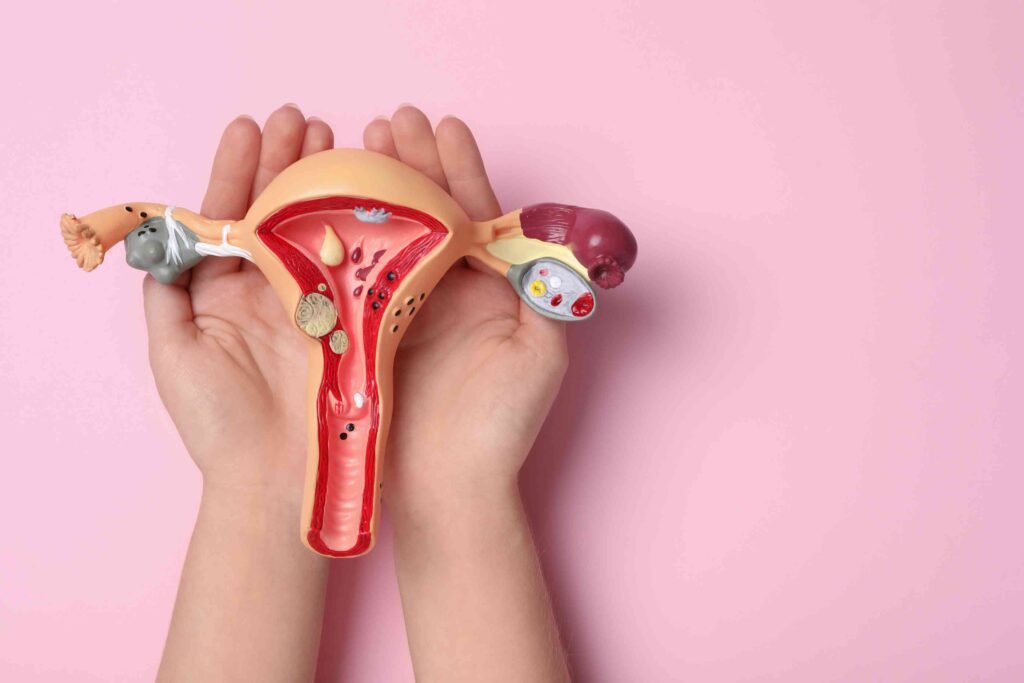How Adenomyosis Differs From Endometriosis?
If you’ve ever found yourself tangled in the confusing web of reproductive health terms, you’re not alone. For many women, understanding conditions like adenomyosis and endometriosis can feel like navigating a maze without a map. While these two gynecological conditions are often lumped together, they are not the same — and understanding how adenomyosis differs from endometriosis can make a world of difference, especially if you’re trying to conceive or simply looking for answers about your body.
So, let’s sit down and have a real talk about what makes these two conditions distinct, how they affect fertility, and why you should care — whether you’re actively trying to start a family or just want to better understand your reproductive health.
What Exactly Are Adenomyosis and Endometriosis?
Endometriosis is a condition where tissue similar to the lining of the uterus — called the endometrium — starts growing outside the uterus. These growths can appear on the ovaries, fallopian tubes, the outer surface of the uterus, and even the bladder or intestines. The problem? These rogue tissues act just like the lining of your uterus: they thicken, break down, and bleed during each menstrual cycle. But since there’s no exit for the blood and tissue, it leads to inflammation, scarring, and often excruciating pain.
On the flip side, adenomyosis is when the endometrial tissue actually grows into the muscular wall of the uterus. Instead of staying in the cavity where it belongs, the tissue invades the muscle layer, causing the uterus to become enlarged and tender. This often results in heavy, painful periods and chronic pelvic discomfort.
How Adenomyosis Differs From Endometriosis?
1. Location
One of the main ways adenomyosis differs from endometriosis is where the abnormal tissue shows up.
In adenomyosis, the endometrial tissue stays within the uterus — but it burrows into the muscular wall. Imagine your uterus as a balloon, and the inner lining is the wallpaper. In adenomyosis, the wallpaper starts growing into the rubbery walls of the balloon.
In endometriosis, the tissue goes on a bit of a journey. It travels outside the uterus to places it shouldn’t be — ovaries, fallopian tubes, even the bowel.
This difference in location isn’t just an anatomical detail; it impacts everything from symptoms to fertility to treatment options.
2. Symptoms: Similar, But Not the Same
On the surface, the symptoms can seem almost identical. Both conditions can cause:
- Painful periods
- Chronic pelvic pain
- Heavy menstrual bleeding
- Pain during sex
- Fatigue

But how they present often gives clues. Women with adenomyosis frequently describe a heavy, dragging sensation in the pelvis and tend to have significantly heavier periods. Those with endometriosis, however, often report more severe pain even between cycles, especially during ovulation or bowel movements.
Also, while endometriosis pain can be more stabbing or sharp, adenomyosis often feels like a deep, heavy ache.
3. Who Gets It?
This is another key area where adenomyosis differs from endometriosis. Adenomyosis usually affects women in their 30s and 40s, particularly those who have had children. Endometriosis, meanwhile, tends to show up earlier — often starting in the late teens or early twenties, and is frequently diagnosed in women who haven’t yet had children.
That said, both conditions can affect anyone of reproductive age, and there are always exceptions to the rule.
How Adenomyosis and Endometriosis Affect Fertility
Ah, fertility — the part of the conversation that gets both deeply personal and highly emotional. Many women first hear about adenomyosis or endometriosis during their fertility journey, often after struggling to conceive.
Let’s explore how each condition impacts fertility, and where their effects overlap and diverge.
Endometriosis and Fertility
When it comes to fertility issues, endometriosis is a heavyweight contender. It’s one of the leading causes of infertility in women, affecting up to 50% of women who have trouble getting pregnant.
Why? A few reasons:
- Inflammation from the abnormal tissue can damage eggs or sperm.
- Scar tissue may block the fallopian tubes.
- Endometriosis on the ovaries (called endometriomas) can interfere with ovulation.
- The immune system may be overactive, attacking the embryo or affecting implantation.
However, it’s not all doom and gloom. Many women with mild to moderate endometriosis do conceive naturally, and assisted reproductive technologies like IVF can be highly effective.

Adenomyosis and Fertility
Now, here’s where things get more complicated — and where the conversation about how adenomyosis differs from endometriosis really matters.
For a long time, adenomyosis was considered a condition that mostly affected older women, especially those who’d already had kids. As a result, its effect on fertility was often overlooked.
But newer research has flipped that narrative. It turns out that adenomyosis can have a significant impact on fertility. Here’s how:
- The uterine muscle becomes inflamed and less functional, which can interfere with embryo implantation.
- The uterine environment becomes hostile, reducing the chances of a successful pregnancy.
- The uterus may contract abnormally, which can expel an embryo before it implants properly.
Unlike endometriosis, which primarily affects the outside structures involved in reproduction, adenomyosis messes with the inner workings of the uterus itself — the very place where a pregnancy needs to take hold.
Diagnosis:
Here’s another area where adenomyosis differs from endometriosis — the challenge of getting diagnosed.
Endometriosis can be confirmed through laparoscopy, a minor surgical procedure that lets doctors look inside your abdomen with a camera. While invasive, it’s fairly straightforward in terms of getting a definitive answer.
Adenomyosis, however, is trickier. It used to be diagnosed only after a hysterectomy, by examining uterine tissue under a microscope. Today, though, MRI and transvaginal ultrasound can often spot it — but it still tends to get missed or misdiagnosed as fibroids or other issues.
Women may go years suffering from unexplained symptoms, being told it’s “just bad cramps,” or being misdiagnosed altogether.

Treatment Options:
Knowing how adenomyosis differs from endometriosis is crucial when it comes to treatment, especially if fertility is on your mind.
For Endometriosis:
- Hormonal therapy (like birth control pills, IUDs, or GnRH agonists)
- Surgical removal of lesions via laparoscopy
- Pain management
- IVF or other fertility treatments if conception is the goal
For Adenomyosis:
- Hormonal treatments can help, but they often don’t work as well as they do for endometriosis.
- Uterine-sparing surgeries, such as adenomyomectomy, are an option but are highly specialized.
- In more severe cases or after family completion, hysterectomy might be recommended.
- Some women benefit from GnRH therapy, though it’s typically short-term.
And here’s where personalized care becomes essential. Just because something worked for one person with endometriosis doesn’t mean it will help someone with adenomyosis — and vice versa.
Can You Have Both?
Unfortunately, yes. Some women are diagnosed with both adenomyosis and endometriosis — a frustrating double whammy that can significantly affect pain levels and fertility outcomes. Studies suggest that these two conditions often co-exist, especially in women with severe pelvic pain or fertility issues.
Understanding how adenomyosis differs from endometriosis in these cases is vital for tailoring treatment plans and improving fertility outcomes.
Mental and Emotional Health:
Let’s not sugarcoat it — living with either condition can take a serious toll on your mental health. The chronic pain, the fertility struggles, the years of not being believed or taken seriously by healthcare providers — it’s exhausting.
Many women suffer in silence, juggling work, relationships, and daily responsibilities while managing symptoms that would sideline anyone else.
So whether you’ve just been diagnosed, suspect you may have one of these conditions, or are supporting someone who does — give yourself grace. And know that you’re not alone.

Why Understanding the Difference Matters?
To wrap things up, here’s the core takeaway: Understanding how adenomyosis differs from endometriosis isn’t just a matter of medical curiosity — it’s a vital part of managing your health and fertility.
While both conditions involve the abnormal presence of endometrial tissue, they behave very differently and affect the body in unique ways. Recognizing these distinctions can lead to:
- More accurate diagnosis
- Better treatment strategies
- Improved fertility outcomes
- A stronger sense of empowerment over your own health
If you’ve been dealing with chronic pelvic pain, heavy periods, or unexplained fertility issues, don’t settle for vague answers. Advocate for yourself. Push for deeper investigation. And most of all, trust your intuition — you know your body better than anyone else.
Final Thoughts
We’ve covered a lot, and if your head’s spinning a little, that’s totally okay. The takeaway here isn’t to become an expert in reproductive pathology — it’s to understand that adenomyosis differs from endometriosis in significant ways, and knowing the difference could change your entire approach to managing your symptoms or navigating your fertility journey.


